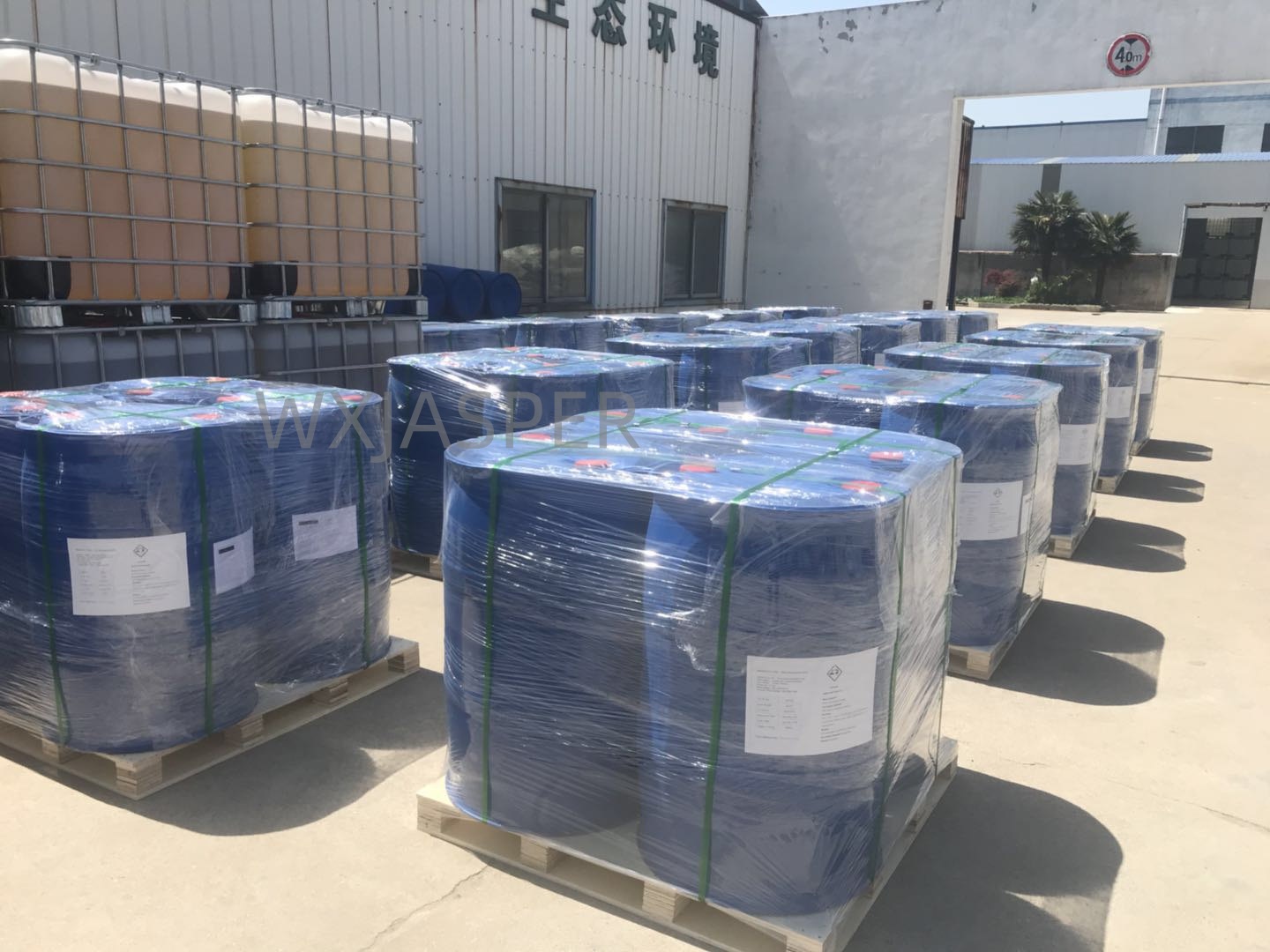Your Location:Home > Products > Solvents > Sodium Lauroamphoacetate



CasNo: 156028-14-7
MF: C18H34N2O3.Na
Appearance: liquid
Delivery Time: 15 days
Packing: 200kg/drum
Purity: 99%
|
Indicator |
Typical Values (Cosmetic Grade, Commercial Concentrations) |
Description |
|
Appearance |
Colorless to pale yellow transparent viscous liquid |
High viscosity ensures uniform dispersion in formulations; no sediment or turbidity under normal storage conditions. |
|
Solid Content |
Grade 1: 33.0%–37.0%; Grade 2: 38.0%–42.0% |
Two common commercial grades to meet different formulation concentration needs. |
|
Active Ingredient Content |
30.0%–32.0% (consistent across grades, with minor solid content differences from salts/impurities) |
Guaranteed active content ensures stable performance in end products. |
|
Sodium Chloride (NaCl) Content |
Grade 1: ≤7.6%; Grade 2: ≤10.0% |
Controlled NaCl levels prevent excessive thickening or potential skin irritation; low-salt grades (≤5%) are available for sensitive formulations. |
|
pH Value (1% aqueous solution, 25°C) |
Grade 1: 7.0–10.0; Grade 2: 8.5–10.5 |
Slightly alkaline to neutral range, compatible with most personal care product pH requirements (adjustable with citric acid if needed). |
|
Viscosity (25°C, mPa·s) |
Grade 1: 3,000–9,000; Grade 2: <5,000 |
Viscous texture reduces reliance on additional thickeners (e.g., carbomers); viscosity can be fine-tuned with NaCl for gel-like formulations. |
|
Odor |
Mild, characteristic of raw materials; odorless in optimized grades |
No off-odors, eliminating the need for masking fragrances in mild products (e.g., baby care). |
|
Solubility |
Fully soluble in water (miscible in any proportion); partially soluble in polar solvents (propylene glycol, ethanol); insoluble in non-polar solvents (mineral oil, silicone oil) |
Ideal for water-based formulations; requires nonionic co-surfactants (e.g., AEO-3) for oil-phase emulsification. |
|
Stability |
Stable over pH 4.0–11.0; resistant to hard water (calcium/magnesium ions ≤500 ppm); decomposes at >95°C or in strong alkaline conditions (pH >12) |
Maintains performance in typical cosmetic production (avoid high-temperature sterilization >90°C). |
Ultra-Mildness for Sensitive Skin & Eyes
SLAA’s amphoteric charge adapts to skin pH, minimizing interaction with skin proteins and lipid barriers—avoiding over-degreasing or irritation. It scores ≤0.3 (out of 10) in skin irritation tests (OECD 404) and is classified as "tear-free" in eye irritation tests (OECD 405). When compounded with anionic surfactants (e.g., SLES), it reduces irritation by 45%–55% while preserving cleansing power, making it ideal for baby care and post-sun repair products.
Rich, Long-Lasting Foaming
It produces fine, dense foam with excellent stability:
|
Product Type |
Recommended Dosage |
Key Functions & Benefits |
|
Children’s Shampoos (tear-free) |
4%–12% |
Mild cleansing without eye irritation; enhances combability when paired with cationic conditioners. |
|
Facial Cleansers (sensitive-skin) |
15%–40% |
Removes sebum and light makeup; maintains skin moisture (no post-cleansing tightness). |
|
Body Washes (moisturizing) |
4%–30% |
Produces rich foam; compatible with plant extracts (e.g., aloe vera) for added soothing effects. |
|
Pet Shampoos |
8%–20% |
Gentle on pet skin/coat; avoids dryness or itching caused by harsh surfactants. |
|
Shaving Creams/Gels |
10%–25% |
Reduces razor friction; leaves skin smooth (no post-shave irritation). |